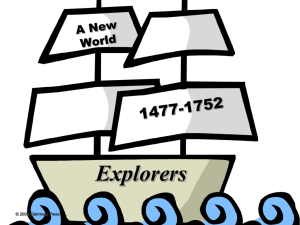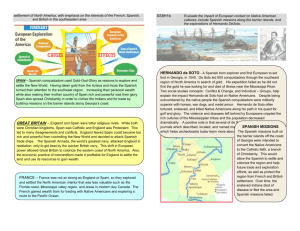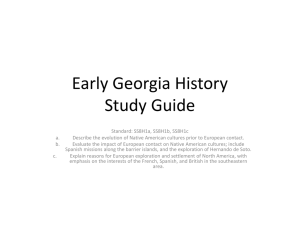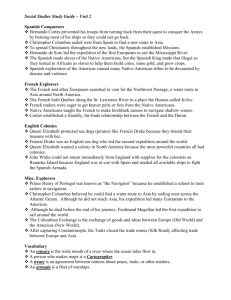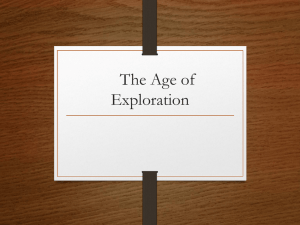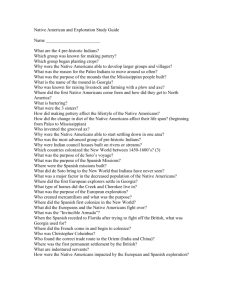Chapter 4 Lesson 2 The Search for Gold and Riches
advertisement
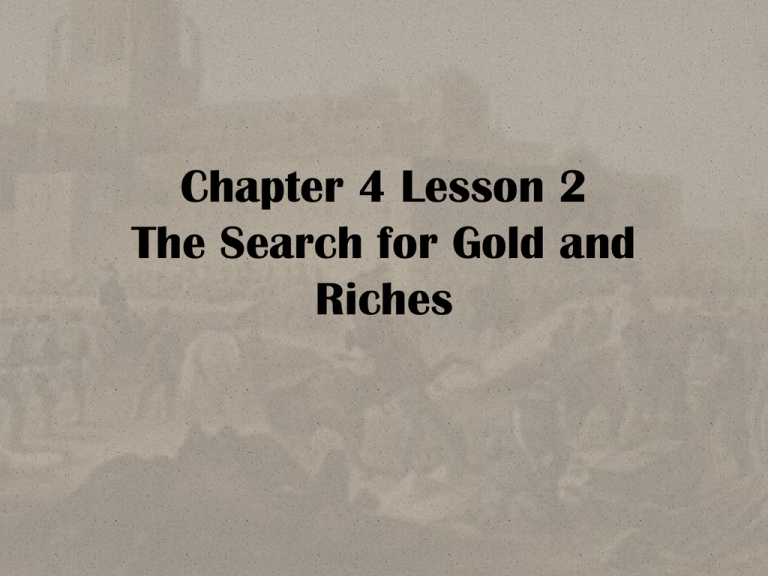
Chapter 4 Lesson 2 The Search for Gold and Riches • Spain’s rulers wanted the conquistadors to explore the lands north of Mexico. – The Spanish King offered grants to those who would lead expeditions into the northern continent. • Ponce de Leon was a Spanish explorer who accepted the offer and received a grant. The Spanish Move into Florida • Ponce de Leon had sailed with Columbus on his second voyage. • For a time he lived on the island of Hispaniola (present-day Haiti and Dominican Republic) • Later he explored and conquered what is now known as Puerto Rico and was named governor of the island. The Fountain of Youth • He heard a story about a fountain whose waters were said to make old people young again. • This “Fountain of Youth” was suppose to be on an island north called Bimini. • He sailed north but did not find Bimini. Instead he landed on the North American mainland (St. Augustine). • He named the mainland La Florida (Spanish for “filled with flowers”) Fighting Back • When he tried to establish a settlement in Florida, the Calusa Indians attacked. • During the attack, Ponce de Leon was injured and later died. • Though he never found the “Fountain of Youth,” he was the first Spanish explorer to set foot in what is now today the United States. The Seven Cities of Gold • Many people believed the stories that there were seven cities that were built of all gold. • In 1536 four men (Alvar Cabeza de Vaca, two Spaniards, and a North Afican named Esteban) told the story to Spanish leaders in Mexico City. • In 1539 the leaders sent Esteban and a priest, Marcos de Niza on an expedition to see if the story was true. • In their journey, Esteban was killed by Zuni Indians, but Niza returned saying he had seen a golden city. Francisco Vasquez de Coronado No City of Gold • In 1540, after hearing about Niza’s journey, Francisco Vasquez de Coronado and more than 1,000 soldiers set out to find the seven cities. • He traveled north of Mexico through present-day Arizona, New Mexico, Texas, and Oklahoma. • After the disappointment of not finding the seven cities, he began the long trip home. • The trail that he took home would later become known as the Santa Fe Trail. • When he returned home, he claimed many new lands for Spain. Hernando de Soto Hernando de Soto • The King of Spain gave Hernando de Soto a grant for an expedition to the northern part of the new continent. • De Soto and his army of 600 soldiers sailed to the west coast of Florida in May 1539. • They continued to move north and by the winter they reached present-day Georgia. • Searching for gold, they went though South Carolina, North Carolina, Tennessee and then back south to Alabama. Soto’s Expedition • On his expedition, he encountered many Indian people and many battles took place. – the worst occurring in Alabama • There were between 2,500 – 11,000 Indians killed in battle. • The Spanish lost 20 men, but most of their supplies were destroyed. New Land for Spain • Although De Soto and his army were in poor condition they marched on to the banks of Mississippi River in May 1541. • They were the fist Europeans to see this river. • There they searched for gold for three years and never found any. • In 1542, Hernando de Soto died from a fever and his men buried him in the Mississippi River. • The soldiers returned home to Mexico claiming much of the land they explored for Spain.
